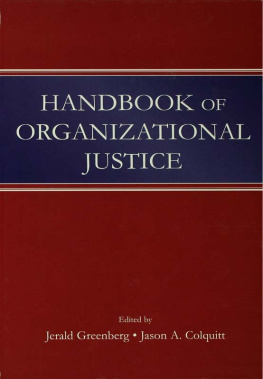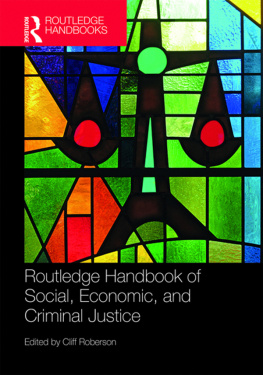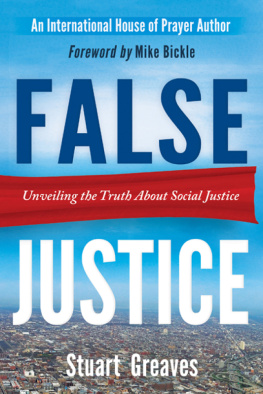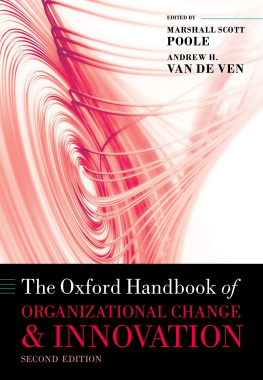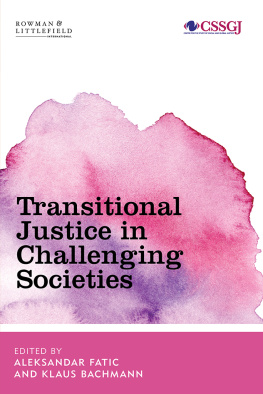Handbook of
Organizational Justice
Handbook of
Organizational Justice
Jerald Greenberg
The Ohio State University
Jason A. Colquitt
University of Florida
Copyright 2005 by Lawrence Erlbaum Associates, Inc.
All rights reserved. No part of this book may be reproduced in any form, by photostat, microform, retrieval system, or any other means, without prior written permission of the publisher.
| Cover design by Kathryn Houghtaling Lacey |
Library of Congress Cataloging-in-Publication Data
Handbook of organizational justice / edited by Jerald Greenberg, Jason
Colquitt.
p. cm.
Includes bibliographical references and index.
ISBN 0-8058-4203-9 (cloth: alk. paper)
1. Organizational justice. I. Greenberg, Jerald. II. Colquitt, Jason.
HD6971.3.H36 2005
| 658.314dc22 | 20040564220
CIP |
Books published by Lawrence Erlbaum Associates are printed on acid-free paper, and their bindings are chosen for strength and durability.
Printed in the United States of America
10 9 8 7 6 5 4 3 2
To Carolyn.
Nothing in this book
even begins to capture yourfairness.
J. G.
To Catherine.
For all those late nights keeping mecompany
as I wrote about this subject.
J. A. C.
Contents
Jason A. Colquitt, Jerald Greenberg, and Cindy P. Zapata-Phelan
Maureen L. Ambrose and Anke Arnaud
Robert J. Bies
Jason A. Colquitt and John C. Shaw
Debra L. Shapiro and Jeanne M. Brett
Jennifer Z. Gillespie and Jerald Greenberg
Robert Folger, Russell Cropanzano, and Barry Goldman
Roy J. Lewicki, Carolyn Wiethoff, and Edward C. Tomlinson
Kees Vanden Bos
Donald E. Conlon, Christopher J. Meyer, and Jadyn M. Nowakowski
Steven L. Blader and Tom R. Tyler
Robert H. Moorman and Zinta S. Byrne
Ril Vermunt and Herman Steensma
Stephen W. Gilliland and Jeff M. S. Hale
Eugene F. Stone-Romero and Dianna L. Stone
D. Ramona Bobocel and Agnes Zdaniuk
Daniel P. Skarlicki and Gary P. Latham
Joel Brockner and Batia Wiesenfeld
Kwok Leung
Jason A. Colquitt, Jerald Greenberg, and Brent A. Scott
Preface
Visit any place where people work and ask individuals how they feel about their organizationstheir jobs, bosses, coworkers, pay, working conditions, company policiesthings in general. What do they like? What annoys them? In short order, the conversation inevitably will turn to issues of fairness and unfairness. Some may proclaim, You always get a fair shake around here, or They treat you pretty good, whereas others may grouse, I don't get paid enough, or Someone's always out to get you. The attitudes underlying these remarks reflect concerns about fairness, or lack thereof.
As these comments suggest, matters of perceived fairnessor justice, a term with which it is used interchangeably by most social scientists (including the contributors to this book)run deep in the workplace. Workers are concerned about being treated fairly by their supervisors, managers generally are interested in treating their direct reports fairly, and everyone is concerned about what happens when these expectations are violated. All of this is the stuff of which this book is madethe topic of organizational justicedefined as people's perceptions of fairness in organizations.
Matters of justice arise in all life contexts. Spouses insist on being treated fairly by their partners. Athletes demand a level playing field. And, of course, litigants seek justice in the courtroom. Although these are interesting and important venues, to be sure, there appears to be something unique about the workplace that gives concerns about justice such a prominent place on people's minds. Perhaps it's that the metrics for assessing justice in the workplace are operationalized routinely by naturally occurring differences in pay and work conditions, as well as differential job performance. Similarly, justice concerns are likely to be triggered on the job by the existence of formal procedures that mandate what to do, whether monumental, such as deciding whose jobs are to eliminate, or mundane, such as when and where rest breaks may be taken. And, of course, the fact that people spend approximately half their waking hours in close interaction with others also may be sufficient to trigger sensitivities about the propriety of their interpersonal treatment. For these reasons, and countless others that are chronicled on the pages of this book, people are keenly attuned to matters of justice and injustice in organizations.
Not surprisingly, social scientists have found themselves sufficiently intrigued by these matters to examine them in detail in recent years, rendering the study of organizational justice one of the most popular foci of organizational scholars today. Consider, for example, that scientific publications referenced by the key terms justice and fairness have been rising exponentially in recent years, and this trend shows no sign of leveling off. Even the most cursory look at the journals, textbooks, and presentations at scientific conferences in the fields of industrial-organizational psychology, organizational behavior, and human resource management will reveal that today's scholars are keenly attuned to matters of justice. Because the research, theorizing, and practical applications germane to organizational justice have grown so dramatically in recent years, the need has arisen to assemble what we know about organizational justice in a single comprehensive volume.
This book is intended to address that need. In so doing, we intended to throughly document, critically analyze, and thoughtfully reflect on the state of the field to this point. Specifically, the Handbook of Organizational Justice is designed to be a complete, current, and comprehensive reference chronicling the current state of the organizational justice literature. To accomplish this lofty objective, we began by composing a list of key questions that depicted the way the field has been unfolding. We then invited key contributors to the field, some of today's most prolific and influential scholars, to address these questions in their essays. To highlight the interconnections between these themes and to trace the development of ideas, we organized these chapters into seven parts.
, entitled Introduction, consists of a single chapter (1) that introduces the topic of organizational justice from a historical perspective. It is designed to help readers understand how the intellectual traditions from which the various perspectives highlighted in this book were derived.
examines Construct Validity Issues. It contains three chapters that address fundamental issues regarding the nature of organizational justice. These concern the interrelationships between procedural and distributive justice (2), the distinctions between procedural and interactional justice (3), and a discussion of the measurement of justice constructs (4).
is composed of four chapters that critically examine the Justice Judgment Process. Specifically, it addresses such central psychological processes as the roles of control (5), self-interest (6), morality (7), and trust (8) in the formation of justice judgments.

